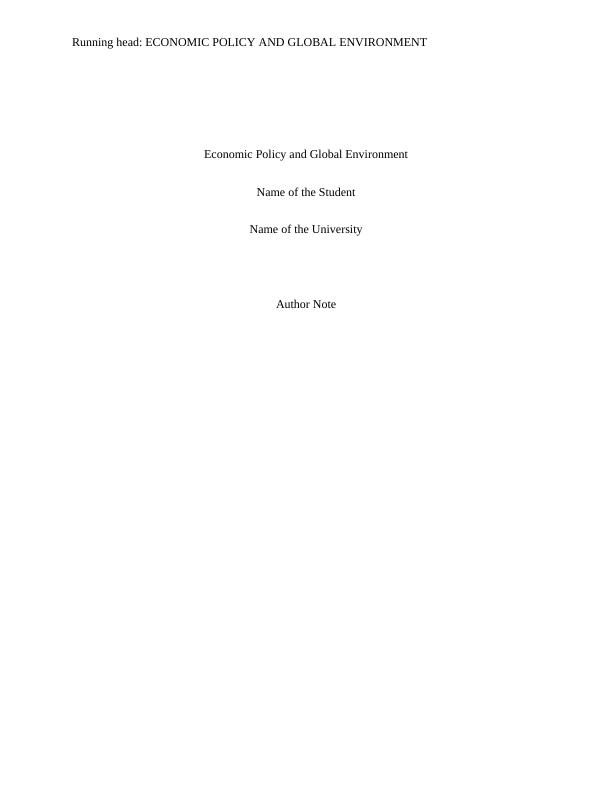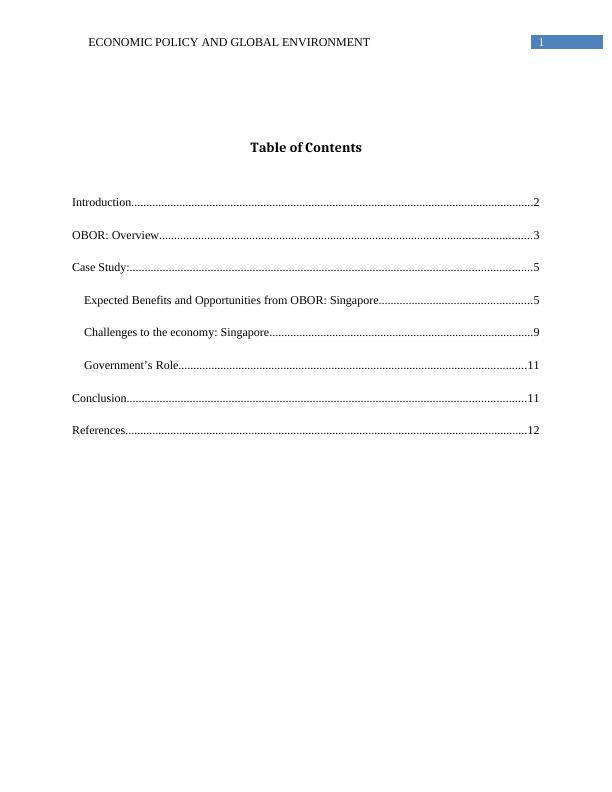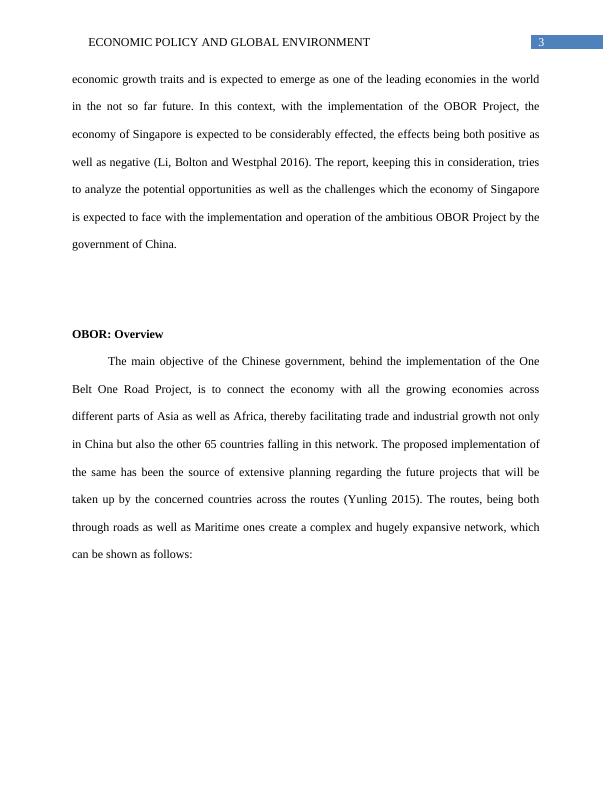Economic Policy and Global Environment
14 Pages3021 Words53 Views
Added on 2020-05-28
Economic Policy and Global Environment
Added on 2020-05-28
ShareRelated Documents
Running head: ECONOMIC POLICY AND GLOBAL ENVIRONMENT Economic Policy and Global EnvironmentName of the StudentName of the UniversityAuthor Note

1ECONOMIC POLICY AND GLOBAL ENVIRONMENT Table of ContentsIntroduction......................................................................................................................................2OBOR: Overview............................................................................................................................3Case Study:......................................................................................................................................5Expected Benefits and Opportunities from OBOR: Singapore...................................................5Challenges to the economy: Singapore........................................................................................9Government’s Role....................................................................................................................11Conclusion.....................................................................................................................................11References......................................................................................................................................12

2ECONOMIC POLICY AND GLOBAL ENVIRONMENT Introduction The economic scenario in the global framework has undergone considerable dynamicsover the years with some of the countries slowly emerging as the predominant and mostinfluential economies of the world. These global economies have progressed impressively overthe years in almost all the aspects and with huge commercial and industrial success are nowcapable of influencing the activities and prospects of other countries across the world. China isone such economy (Shambaugh 2013). China has shown immense economic growth over the years and is currently one of thecountries with highest economic growth rate and industrial and commercial prospects. Forexpanding their domain of economic expansion and long term economic progress andcommercial sustainability, China, in the recent years has proposed the implementation of ahighly ambitious project of connecting the country to the other countries in Asia, Africa andEurope, with the objective of facilitating trade and commerce across the entire region (Lim2015). Known as the One Belt One Road Project and with official announcement ofimplementation in 2013, the routes under the OBOR Project are expected to connect 65 countriesacross this region. This in turn is expected to have its influence on more than sixty percent of thepopulation in the world, which contributes more than 30% of the world GDP (Minghao 2015). The OBOR Project, having its domain of operation over nearly all of the South East Asia,is expected to have immense implications on the economy of Singapore, one of the most eminenteconomically progressing countries in the South East Asian region. Being the third largesteconomically growing country (In terms of global GDP) and characterized by the presence of ahighly industrial and least corrupt environment, the country has shown immensely impressive

3ECONOMIC POLICY AND GLOBAL ENVIRONMENT economic growth traits and is expected to emerge as one of the leading economies in the worldin the not so far future. In this context, with the implementation of the OBOR Project, theeconomy of Singapore is expected to be considerably effected, the effects being both positive aswell as negative (Li, Bolton and Westphal 2016). The report, keeping this in consideration, triesto analyze the potential opportunities as well as the challenges which the economy of Singaporeis expected to face with the implementation and operation of the ambitious OBOR Project by thegovernment of China. OBOR: Overview The main objective of the Chinese government, behind the implementation of the OneBelt One Road Project, is to connect the economy with all the growing economies acrossdifferent parts of Asia as well as Africa, thereby facilitating trade and industrial growth not onlyin China but also the other 65 countries falling in this network. The proposed implementation ofthe same has been the source of extensive planning regarding the future projects that will betaken up by the concerned countries across the routes (Yunling 2015). The routes, being boththrough roads as well as Maritime ones create a complex and hugely expansive network, whichcan be shown as follows:

End of preview
Want to access all the pages? Upload your documents or become a member.
Related Documents
One Belt One Road (OBOR) and Social Justicelg...
|8
|2782
|265
OBORlg...
|16
|4027
|455
Economic Implications of China in Africa: Incentives behind China's Belt and Road Initiativelg...
|64
|15559
|494
Business Environment Project China 2022lg...
|6
|1318
|14
Evaluation of Belt and Road Initiative Projectlg...
|22
|5374
|110
Economics Assignment - (Doc)lg...
|16
|3061
|87
